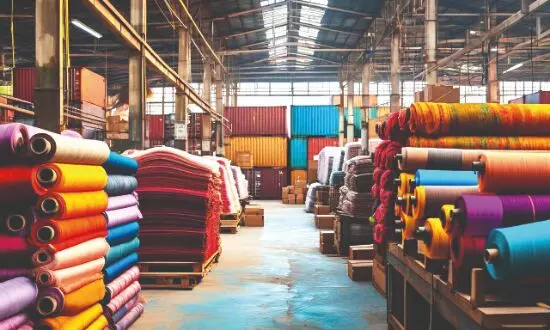Weaving Growth with GST
Simplified, rationalised GST reforms promise wider tax buoyancy, stronger textile demand, thriving crafts, and accessible apparel—creating economic growth rooted in India’s cultural heritage

On September 3, the GST Council recommended historic next-generation GST reforms. Among several advantages, a key benefit of these reforms is that they have created comprehensive socio-economic synergies across sectors of the Indian economy, further strengthening the supply–value chain across the economy. Procedural simplification, rationalisation, digital integration, and enhanced supply-chain transparency will go a long way in bolstering the GST compliance architecture and augmenting tax buoyancy with a wider tax base.
The textiles sector occupies a central place in India’s economic framework, directly employing 45 million people (a large proportion of whom are women) and contributing about 2 per cent to GDP, 10 per cent to industrial production, and 8.63 per cent to the country’s total exports.
The sector is poised to benefit significantly from the GST reforms. The reduction of GST on Man-Made Fibres from 18 per cent to 5 per cent and on Yarns from 12 per cent to 5 per cent is a historical step forward, as it has not only done away with the inverted duty structure (IDS) by aligning the fibre–yarn–fabric GST rates but has also significantly lowered the overall tax incidence, leading to benefits for manufacturers as well as consumers, and enhancing the competitiveness of Indian textile products. The resolution of the IDS has addressed the textile industry’s issues related to working capital constraints, liquidity shortages, and delays in input credit refund/utilisation. Furthermore, the competitiveness of Indian textiles in global markets is expected to improve.
With a large share of MMF production concentrated in small and medium units, the GST reduction will ease cost pressures, strengthen cash flows, and make Indian MMF-based garments more price-competitive globally—supporting India’s ambition to emerge as a hub for synthetic textiles and MMF garments.
Placing carpets and floor coverings in the 5 per cent GST bracket, down from 12 per cent, will help uplift traditional crafts by enhancing affordability in domestic markets and boosting exports from clusters such as Bhadohi and Srinagar. This has special significance as about 60 per cent of carpets made in India are exported.
On 36 product lines of handicrafts, the GST has been reduced from 12 per cent to 5 per cent. These include a range of traditional items such as idols of wood, original engravings, lithographs, original sculptures, handcrafted candles, handbags, carved wood products, wooden frames for painting, handmade/hand-embroidered shawls, tableware and kitchenware of clay and terracotta, aluminium artware, furniture of bamboo, rattan and cane, textile material (including wooden toys of Sawantwadi, Channapatna toys, Thanjavur doll), handmade paper and paperboard, and many more. The reduction of GST on these traditional art items, which are largely produced in villages and smaller towns of India, will provide a significant boost to artisans, enhance rural livelihoods, and support India’s rich craft traditions.
Furthermore, the GST reduction from 12 per cent to 5 per cent on sewing machines (domestic and industrial, covered under the Harmonised System Code - 8452) will give a considerable push to tailoring units and boost domestic manufacturing by reducing production costs.
Middle-class and low-income households will benefit from the increase in the taxable threshold for readymade garments & made-ups from ₹1,000 to ₹2,500 per piece, at a rate of 5 per cent GST. This will enhance the affordability of apparel, particularly in Tier-2/3 towns and rural markets, thereby bolstering overall demand for apparel.
According to a conservative rough estimate, domestic demand for textiles is most likely to increase by about 10 per cent, helping India become a USD 350 billion textile economy by 2030.
A closer look at the GST reforms makes it evident that they will have a substantial synergistic effect across the economy, boosting both domestic production and consumption. For example, the textile sector will not only benefit directly from the GST reduction on textile items but will also gain additional advantages from cost reductions due to lowered GST on freight and logistics (from 12 per cent to 5 per cent), packaging material (reduced to 5 per cent), and truck/delivery vehicles (from 28 per cent to 18 per cent). Thus, these GST reforms create systemic synergy throughout the entire economy.
Therefore, it is important to view the GST reforms not just in terms of individual sectoral gains but as a holistic package, as each sector of the economy is intricately interlinked through forward and backward linkages in the supply–value chain.
However, it is now of utmost importance that the benefits of the reduced GST are passed on by the industry to consumers immediately, without any significant time lag.
In both letter and spirit, the next-generation GST reforms perfectly embody the vision of the Hon’ble Prime Minister encapsulated in ‘Virasat Bhi aur Vikas Bhi’ (preserving heritage along with development and growth).
Views expressed are personal. The writer is the Economic Advisor, Ministry of Textiles, Government of India



